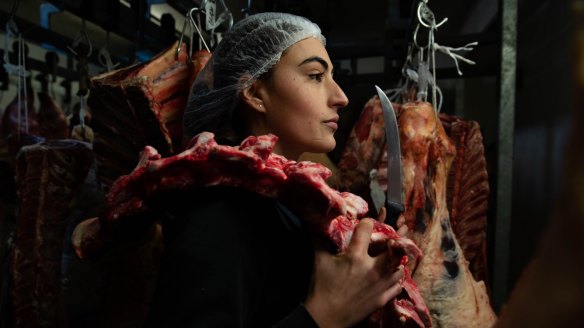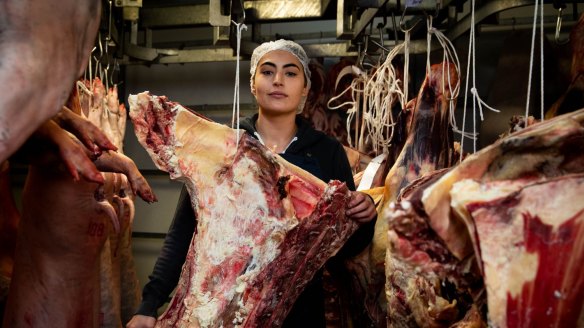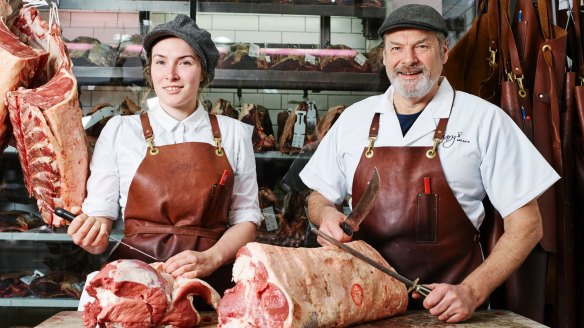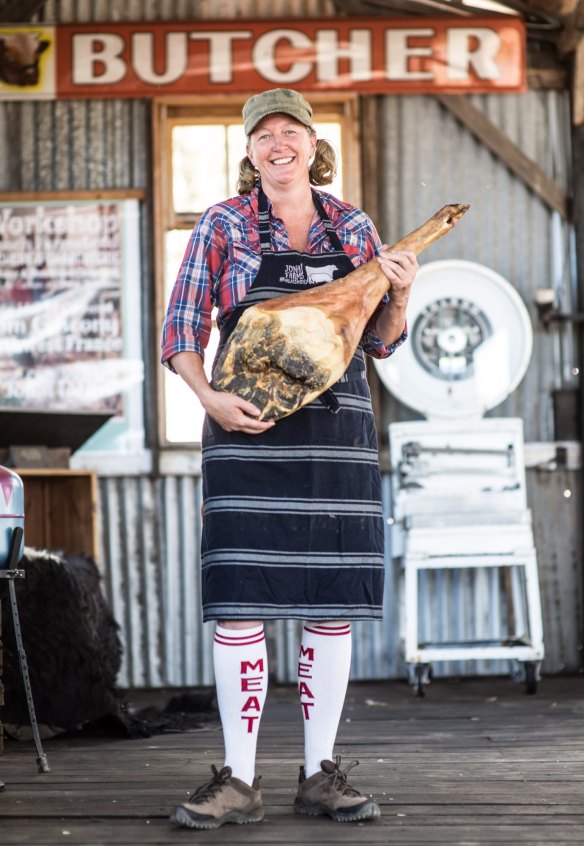No longer just a blokes' business: the stakes improve for women in butchery

Butchering has traditionally been blokes' business. A stocky man with a white shirt, blue apron and scabbard full of knives. But that stereotype looks set to change with an influx of women entering the industry.
It is estimated that less than 5 per cent of Australian butchers are women, and 95 per cent of senior positions in the meat industry are held by men, according to global organisation Meat Business Women.
However, change is coming. Three years ago, just 5 per cent of students at Victoria's South West TAFE meat processing course were female. This year that figure has tripled to 15 per cent.
At the Meat and Allied Trade course at Granville TAFE in NSW, women make up more than one quarter of the 2021 intake. A spokesperson for Granville TAFE suggested the increase in female butchers is due to the increasing popularity of "paddock to plate" cooking and more interest in where food comes from.
But is the industry ready for the next wave of female butchers?
"I was asked by an older man if being a female butcher was legal in NSW," says butcher Jade Sciberras, 24, now working at Feather and Bone in Sydney's Marrickville.

Sciberras is perfectly able to shoulder an entire lamb, and has been working as a butcher since she was 17-years-old, completing her apprenticeship in 2019.
"I have a passion for good food, but I found hospitality too fast and hectic, so I started work in a butcher shop in Erskineville," she says.
"Yes, men referred to me as the 'prettiest' butcher or asked to see a 'real' butcher. But not now. I love what I do.

"I love cutting down a side of beef that has been dry-ageing for weeks, and transforming something so big and bestial into something beautiful. I love boning out muscles and linking sausages. It feels like second nature."
Sciberras takes part in butcher classes for the public and garners pride in middle-aged men looking to her for instructions on how to hold a boning knife.
At Gary's Meats in Melbourne's Prahran Market, 27-year-old Ashleigh McBean has never suffered any discrimination. "I work with Dad," she says, referring to Gary McBean, her employer and a 198-centimetre tall ex-boxer. "The only stick I get is from my vegan friends."

McBean says while many people think butchering is about meat, a successful butcher is constantly developing relationships, building trust and communicating ideas, techniques and methods.
"I love chuck steak," she says, running her hand over her upper shoulder and neck. "That's where that cut is from. It's full of connective tissue and quite tough until you slowly braise it and the chuck releases its delicious flavour and sticky texture."
Tammi Jonas is a butcher, farmer and butchery teacher who has trained 40 women in whole-carcass butchery over the past eight years. At Jonai Farms, her Central Victorian property, she raises pigs and cattle with her husband, and butchers them in a small facility built from shipping containers.
"In the ideal world, it would be just women working and training here," she says. "Women make great butchers. Women don't have to prove themselves. They learn at the pace that suits them, not trying to force through. Women are more patient. They focus on the details and form cohesive teams quickly."
The first female representative on the Australian Meat Industry Council retail board is a former nurse, Hayley Collicoat. She left midwifery to join her husband James Collicoat when he bought a butcher's shop in the Victorian Pyrenees town of Avoca five years ago.
"Butchery used to be a rough blokes' world where all that was sold were fresh cuts," says Collicoat. "But with the pressure from supermarkets we have had to change. Now butchers make smallgoods, charcuterie, pies and exciting ranges of sausages."
Collicoat now owns three butcher shops with her husband. She says women are good at handling the pace of change and the ability to implement it.
"Butchery is no longer just about meat," she says. "It's about food. It's about feeding, cooking and looking after people. I can handle a knife, but I also know a lot about food."
